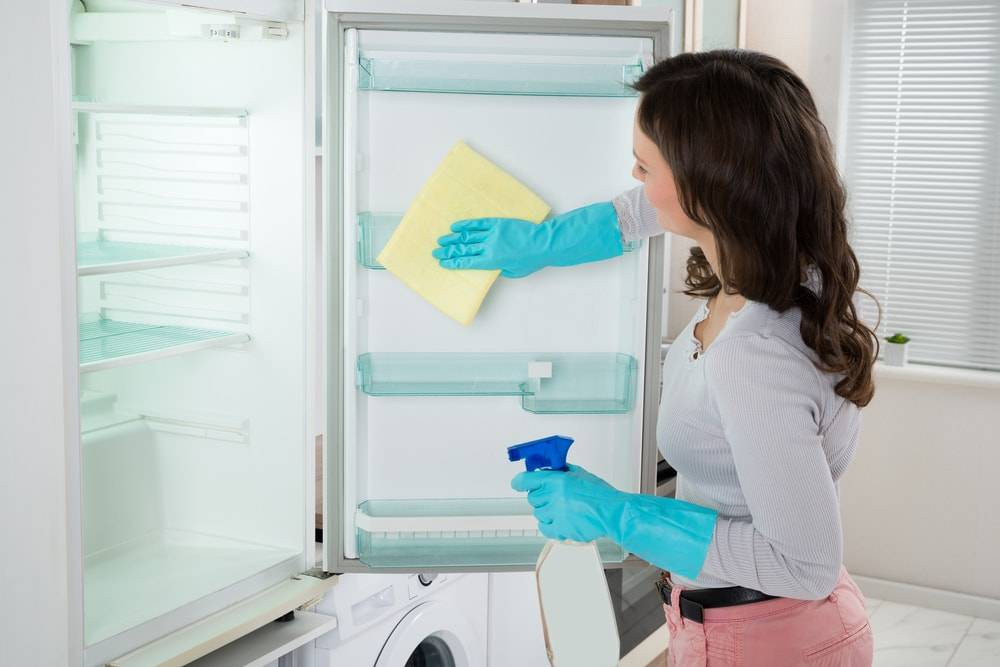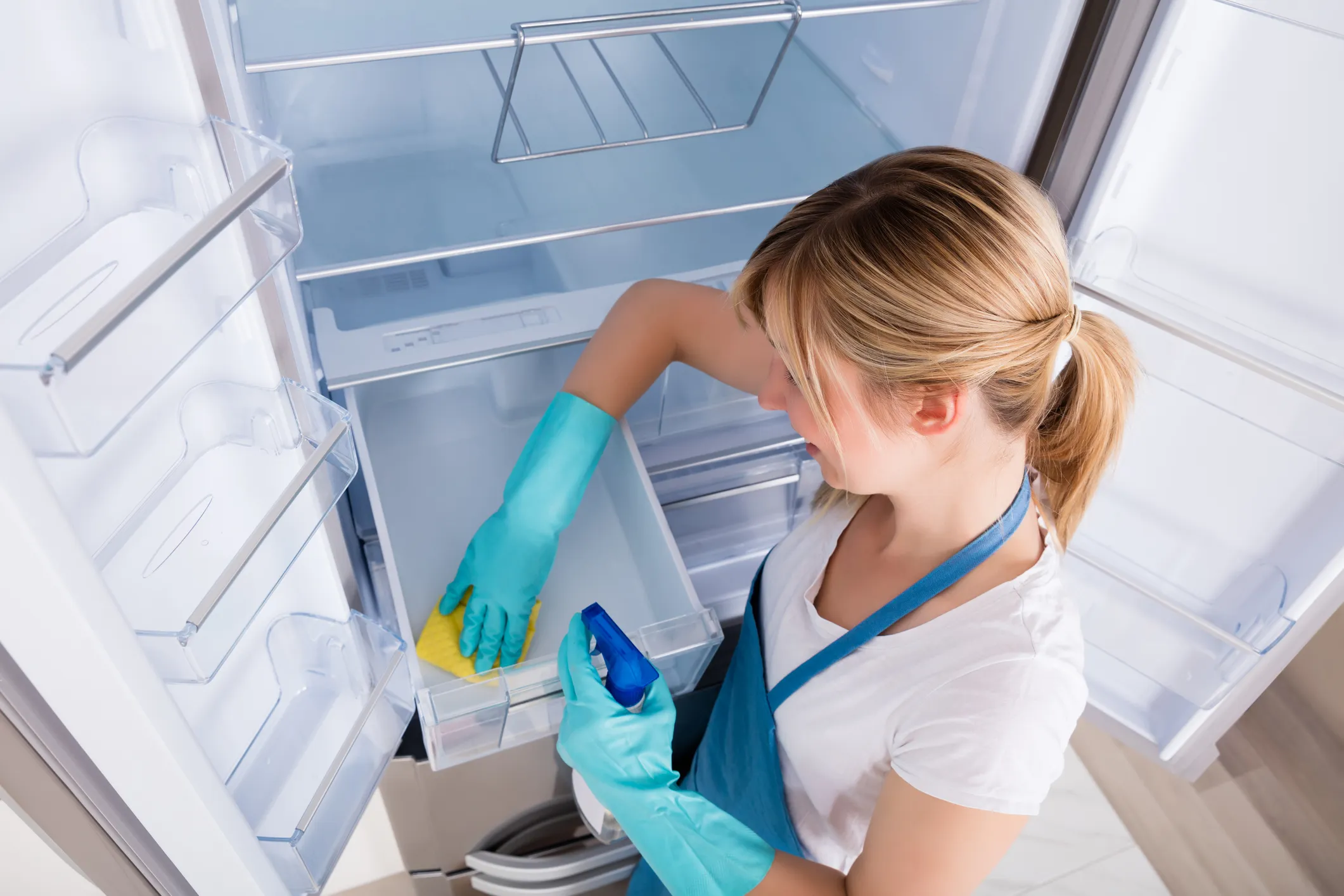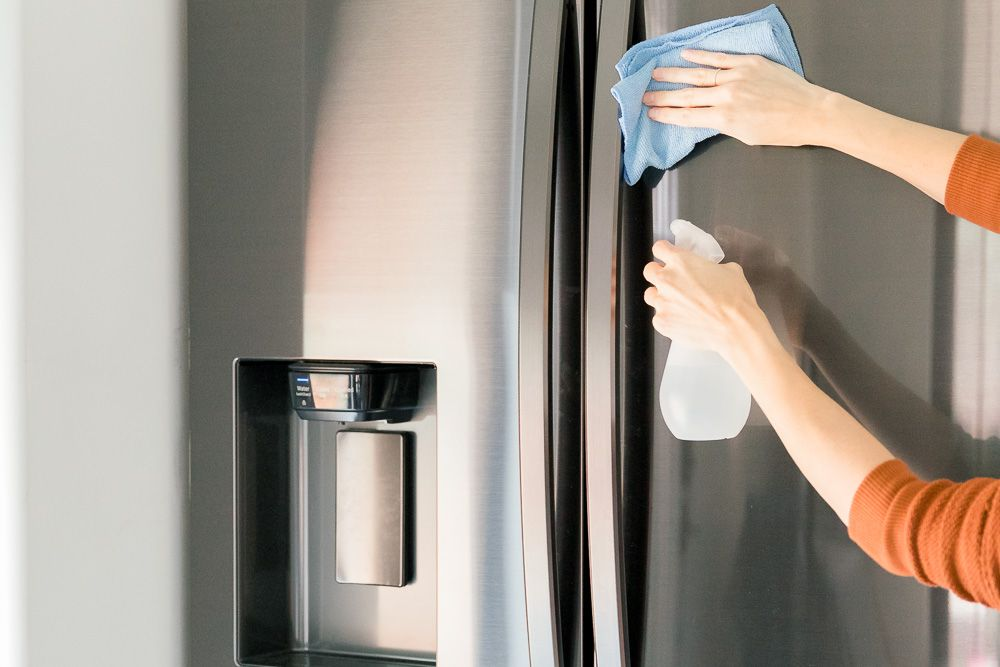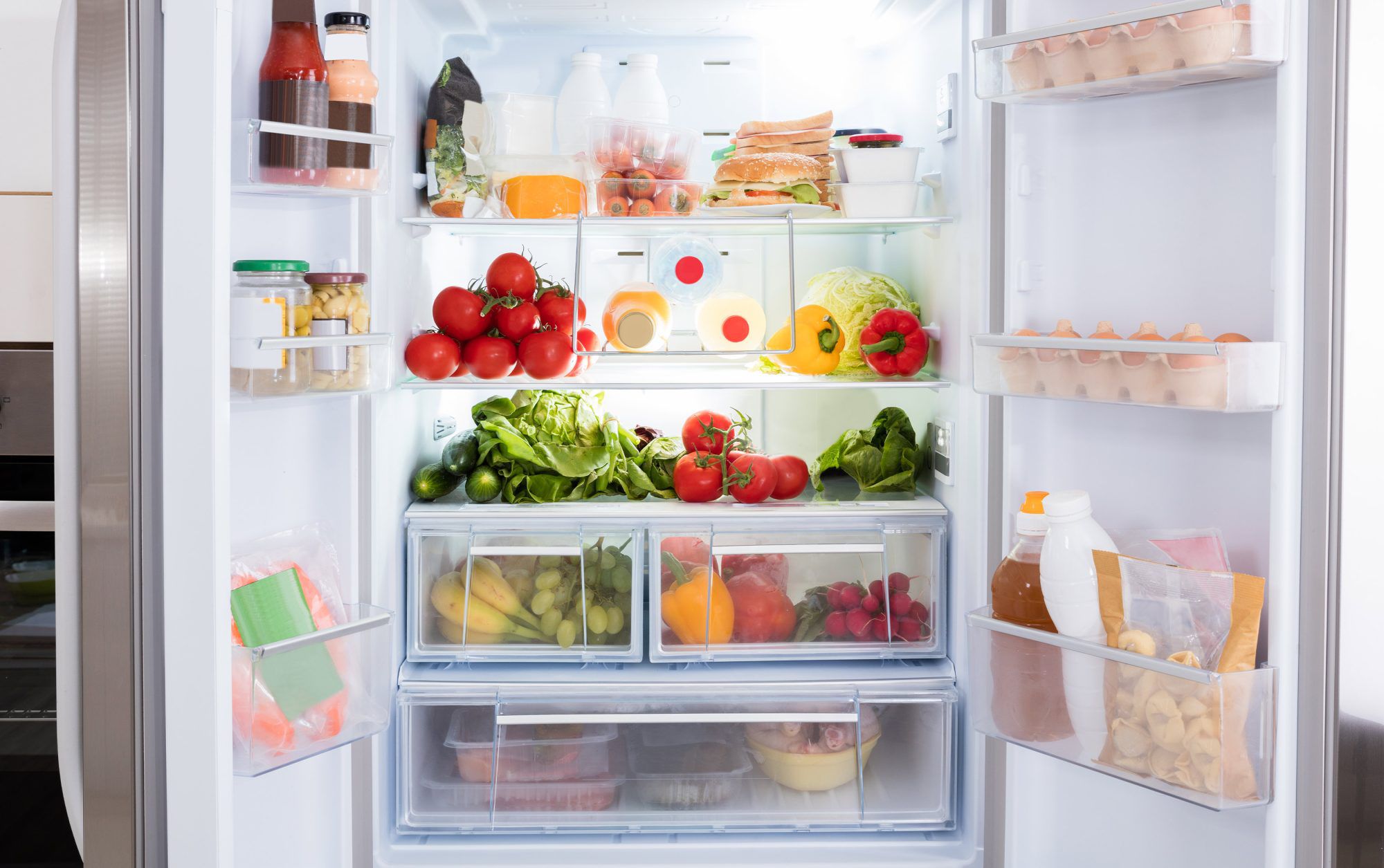If you’re a regular cook or grocery shopper, your refrigerator is likely full of healthy foods. But if your fridge needs to be cleaner, all those delicious ingredients can go wrong before you even have a chance to use them. In this blog post, we’ll show you how to keep your refrigerator clean and organized so that your food stays fresh and safe to eat for extended periods.
Cleaning refrigerators are an essential part of maintaining their efficiency and longevity. If you don’t clean the fridge regularly or have it cleaned by a house cleaning service, it can harbour mould and mildew that could contaminate your food, making you sick. Not only will cleaning your fridge help prevent this from happening, but it will also help keep items fresher for longer.
Luckily, keeping your fridge sanitized and organized isn’t difficult at all. Follow these simple steps to keep your food safe and fresh while ensuring it’s easy to find when cooking or prepping meals.

What You’ll Need:
- Dishwasher Sponge
- Paper Towel
- Water
- Dish Soap
- Damp Cloth
- Soft cloth
- Toothbrush or Toothpick
- Vinegar
- Lemon
- Petroleum jelly
- Baking soda
Instructions
1. Empty the refrigerator
Before you start cleaning, it’s best to empty the refrigerator. If you’re looking to clean the fridge interior, removing any food items that might get damaged by cleaning solutions or water is a good idea.
2. Clean up any spills
After you’ve emptied the fridge and removed all food, it’s time to clean up any spills. This step is crucial because if you leave a spill unattended for too long, mould can start to form.
Use a sponge or paper towel to soak up any fluid leaking from packages or containers. Then, clean the area with warm water and a few drops of dishwashing soap. Cleanse well with cold water.
3. Remove and Wash the fridge shelves and fridge drawers

To deep clean, the refrigerator shelves and drawers, remove them from the fridge. To remove them, use your hands to pull them out of their tracks and lift them. You can also remove the crisper drawer by pulling it out of its slot on the right side of the refrigerator.
If the shelves or any other removable parts are made of glass, it’s best to let them reach room temperature first to lessen the risk of shattering in hot water.
Wipe down the removable parts in the kitchen sink with a sponge to remove any food particles. Then wash the shelves and crisper drawers in warm soapy water and dry them well.
4. Wipe down the inside of the fridge
Wipe down the refrigerator’s interior with warm water and dish soap. You can also clean the fridge’s inside with two tablespoons of baking soda and one-quart hot water. Wet a sponge or soft cloth in this solution, then dry down all surfaces of your refrigerator.
To get into crevices and cracks that a cloth can’t reach, use a toothbrush specifically designed for cleaning or use toothpicks to remove food residue collected in the joint between the surface of the shelf and the shelf surround.
When you’re done wiping down your refrigerator, cleanse off excess moisture and soap with clear water.
5. Wipe down the fridge exterior

Maintain the lustre of your refrigerator by thoroughly cleaning the outside.
Wipe the fridge exterior with a damp cloth to remove dust and grime that has built up over time. You can use an all-purpose cleaner or mild soap and water. Avoid using harsh chemicals as they tend to be scented, which can transfer into food.
Pay special attention to the handles because they are prone to the accumulation of grime. Keep in mind to occasionally clean the refrigerator’s top as well. Even though the handles and fridge door may see more daily circulation, dust can still build up over time.
6. Clean the refrigerator gasket
It’s essential to clean the seal or gasket on your door’s refrigerator to keep a tight seal. This part of the unit is similar to a rubber door seal, which can accumulate dust and dirt over time.
To clean your refrigerator’s seal or gasket, use warm water and liquid soap to remove any dust or debris from the area. If mould is present, use a bleach-based cleanser. Then, thoroughly rinse off the area and wipe dry. After that, apply a thin layer of petroleum jelly to the seal to prevent it from wearing out.
7. Clean the refrigerator coils
Even the hidden components of the refrigerator, like the coils at the back of the fridge, require periodic cleaning. Even though cleaning refrigerator coils is a little more complicated, finishing it will improve and extend the performance of your refrigerator.
Always disconnect the refrigerator before cleaning the coils. To thoroughly clean in and around the coils, use a coil brush. Clean up any dirt using a vacuum or sweeper, then replace the grill before re-plugging the appliance.
8. Remove refrigerator odors
Fill an open container with dry baking soda and place it on the bottom shelf of your refrigerator to deodorize it after you’ve cleaned and dried all the areas of your fridge. When you replenish your fridge, leave this to absorb any scents that could otherwise stay close to your groceries.
Restock and organize your refrigerator after cleaning and deodorizing it. Avoid restocking the fridge with sloppy containers or rotten fruits and vegetables to prevent sticky spills. Throw away any outdated leftovers, group related goods together, and think about utilizing bins and containers to organize your goods.

Sanitize Your Fridge Now!
We’ve covered cleaning your fridge from top to bottom in eight easy steps. These actions ensure you don’t have any foul odours or other unsavoury elements that occur when items go unrefrigerated for too long.
Fridge cleaning will make your food last longer and allow you to save money from throwing out spoiled food. It also allows you to enjoy a clean kitchen without worrying about bad smells or pests getting into your food.
When it’s time to clean your fridge, a little help goes a long way. So grab your favourite cleaning supplies, open the refrigerator door, and get started.
And if you’re in the mood to clean everything in your kitchen, our ultimate how-to-clean a kitchen guide can help you do just that, so every inch of your kitchen is as clean as can be!
FAQs
How often should you clean your fridge?
Your fridge is one of the essential appliances in your home, so keeping it clean and well-maintained is vital. Weekly cleaning can help eliminate unwanted smells and save food that may go bad for later use.
Deep-clean your fridge once every three to four months. To do this, turn it off, remove the shelves and drawers, and wash them in hot, soapy water.
If a refrigerator has been cleaned for a while, chances are there will be lingering food smells and stains that need to be tackled before they start to impact overall food quality negatively.
How to clean a fridge that smells bad?
To eliminate the bad smell, clean out all old food and wipe the inside with vinegar or baking soda paste. If you have hard water deposits on shelves or walls, try scrubbing them down with lemon juice or vinegar.
Take time once a week to empty your fridge, remove any bad-smelling foods, clean off all surfaces and then wipe them down with white vinegar.
Do I need to turn off the fridge before cleaning?
You don’t want the doors to your refrigerator to be open and the lights to be on while you clean it. The best course of action if your refrigerator requires thorough cleaning and the shelves aren’t removable is to unplug it, so you don’t use energy cleaning it.
Is it safe to clean the refrigerator with bleach?
Pure bleach should not be used to clean the interior of the refrigerator. Bleach is a strong cleaning product that might cause more harm than good. Although it is corrosive and works well to remove mould and bacteria from surfaces, it should never come into touch with food. You should discard the food if the bleach comes in contact with it.
Use bleach solution instead of pure bleach because it is less concentrated if you believe the appliance’s interior has to be cleaned with bleach. Use milder cleaning agents and dilute them with water. It will aid in removing bacteria from the refrigerator and freezer.
How do you clean a refrigerator without turning it off?
Use cool water to wash the bins and shelves if you cannot shut off the refrigerator or remove them. With water and a light detergent, clean the pieces, then thoroughly rinse and dry them. Cover stuck-on messes with a warm, damp dish towel to make them soft enough to wipe or scrape off.


